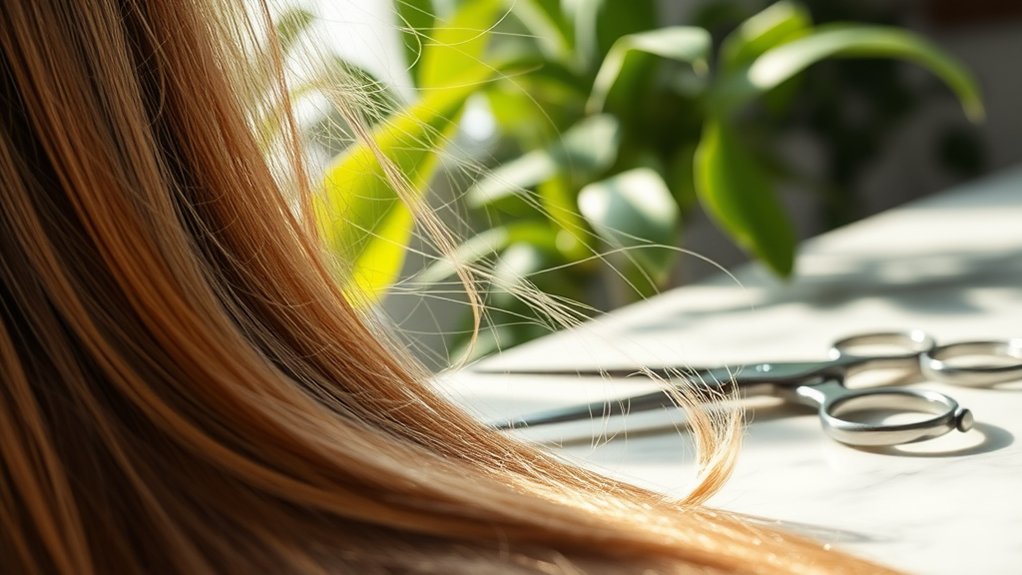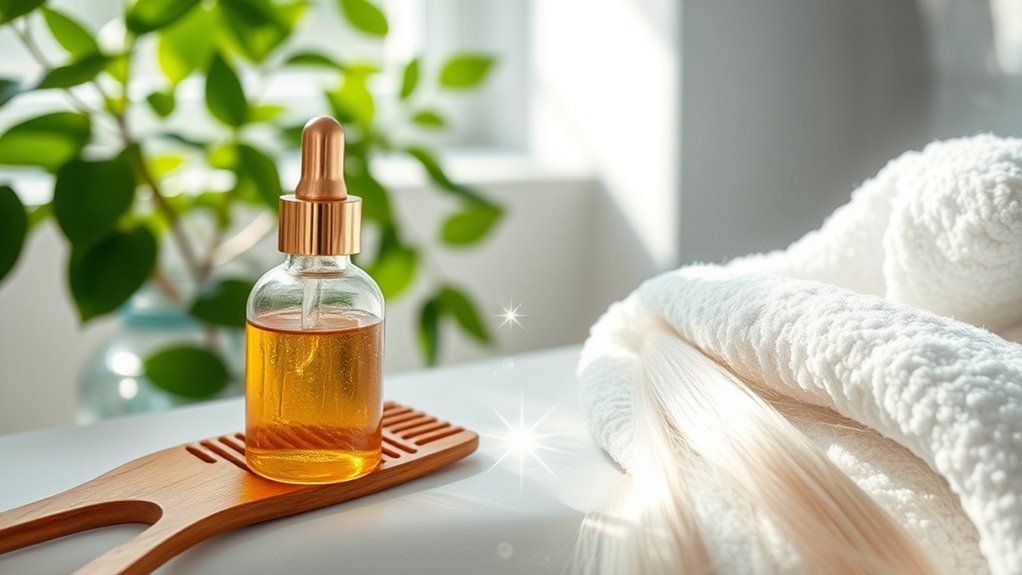How I Cut My Split Ends Without Regretting It
When it comes to cutting split ends, preparation is key. You need to understand your hair’s condition and the right techniques to avoid regrets. Start by assessing the damage and gathering the necessary tools to ensure a precise trim. With a systematic approach, you can take control of your hair’s health. Next, we’ll explore the effective steps you should take to achieve a clean cut and maintain luscious locks.
Key Takeaways
- Prepare hair by cleansing and moisturizing, ensuring it’s detangled to minimize breakage during trimming.
- Use high-quality hair scissors for clean cuts, avoiding tools that could further damage your hair.
- Section hair and inspect each part carefully, removing split ends without cutting too much length.
- Trim regularly every six to eight weeks to maintain healthy ends and prevent future split ends.
- Adopt a gentle hair care routine post-trim, using sulfate-free products and minimizing heat exposure.
Understanding Split Ends and Their Causes
Split ends, or what experts call “trichoptilosis,” can be a frustrating issue for anyone trying to maintain healthy hair. They occur when the protective outer layer of the hair cuticle wears away, often due to environmental factors, heat styling, and lack of moisture.
If you notice frayed or split ends, it’s a sign your hair needs attention. A DIY trim can effectively address this issue, allowing you to maintain your hair’s overall health without visiting a salon. Regular trims will help minimize split ends, keeping your hair looking vibrant and strong while preventing further damage from progressing. Trimming your split ends at home is a simple and effective method to ensure your hair stays healthy and manageable.
Preparing Your Hair for a Trim
To properly tackle split ends, you’ll need to prepare your hair before starting the trimming process. This ensures an effective and safe trim, minimizing damage.
Follow these steps to get ready:
-
Wash Your Hair: Use a gentle shampoo and conditioner to remove product buildup and hydrate your strands.
-
Detangle: Carefully comb through your hair with a wide-tooth comb to prevent further breakage and tangles.
-
Dry: Allow your hair to air dry or use a low-heat setting to protect it from heat damage. Additionally, regularly moisturizing your hair can help prevent split ends, keeping your locks healthy and strong.
With these preparations, you’re set to effectively address those pesky split ends!
The Best Tools for Cutting Split Ends
Having the right tools can make a significant difference when it comes to cutting split ends effectively. Invest in high-quality hair scissors designed specifically for cutting hair, as they provide precise cuts without causing further damage.
A fine-tooth comb helps detangle and section your hair, ensuring you see all those pesky split ends. Consider using hair shears with a texturizing edge; these can smoothly trim while blending hair for a more natural look.
Lastly, always have a mirror handy, preferably a two-sided one, for clear visibility as you work through different sections, ensuring you don’t miss any damaged strands. Additionally, proper technique is crucial to successfully trimming split ends without losing length or damaging your hair further.
Step-by-Step Guide to Cutting Split Ends
Cutting split ends can be a straightforward process that dramatically improves your hair’s appearance and health.
Follow these steps for an effective trim:
-
Section Your Hair: Divide your hair into manageable sections to ensure you can focus on each part thoroughly. Secure them with clips.
-
Identify Split Ends: Carefully inspect the ends of each section. Twist the hair gently; splits will become more noticeable.
-
Trim Carefully: Use sharp scissors to snip just below the split. Aim for a clean cut to prevent future splits.
Maintaining Healthy Hair After the Trim
Once you’ve trimmed those split ends, maintaining your hair’s health becomes crucial for preventing them from returning.
Start by adopting a gentle brushing routine, using a wide-toothed comb to minimize breakage. Nourish your hair with a sulfate-free shampoo and a hydrating conditioner, applying deep conditioning treatments weekly.
Limit heat styling; when you do use heat, always apply a protective spray. Regular trims every six to eight weeks can keep your ends healthy. Additionally, avoiding split ends is crucial for maintaining overall hair health, so be mindful of your styling techniques.
Consider a balanced diet rich in vitamins, particularly biotin and omega-3 fatty acids, to support hair strength and vibrancy. Consistency is key for long-lasting, healthy hair.





